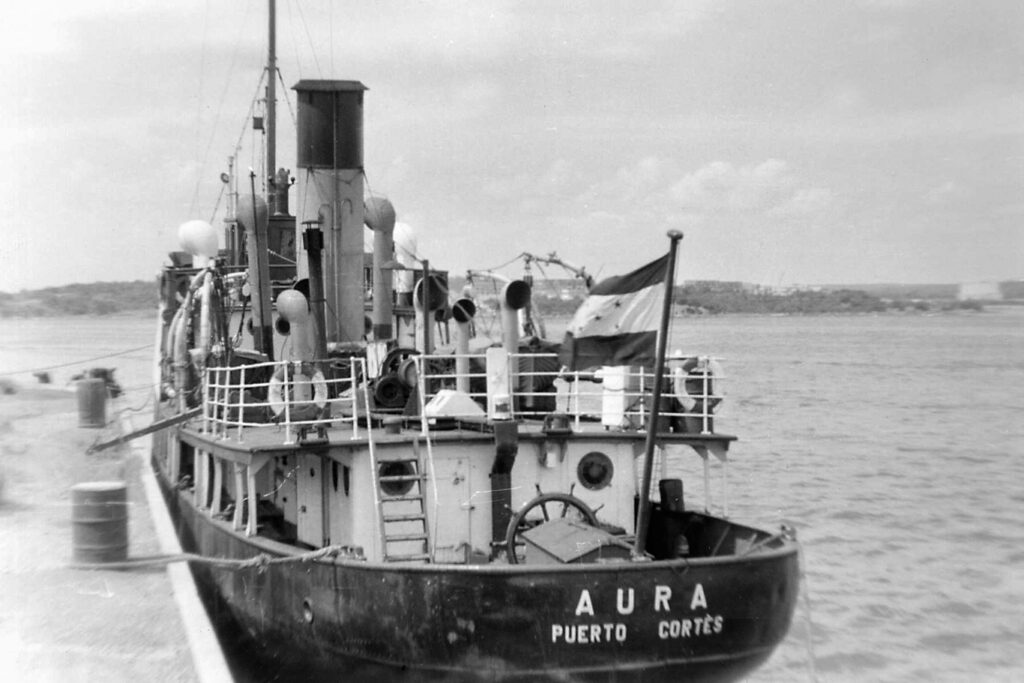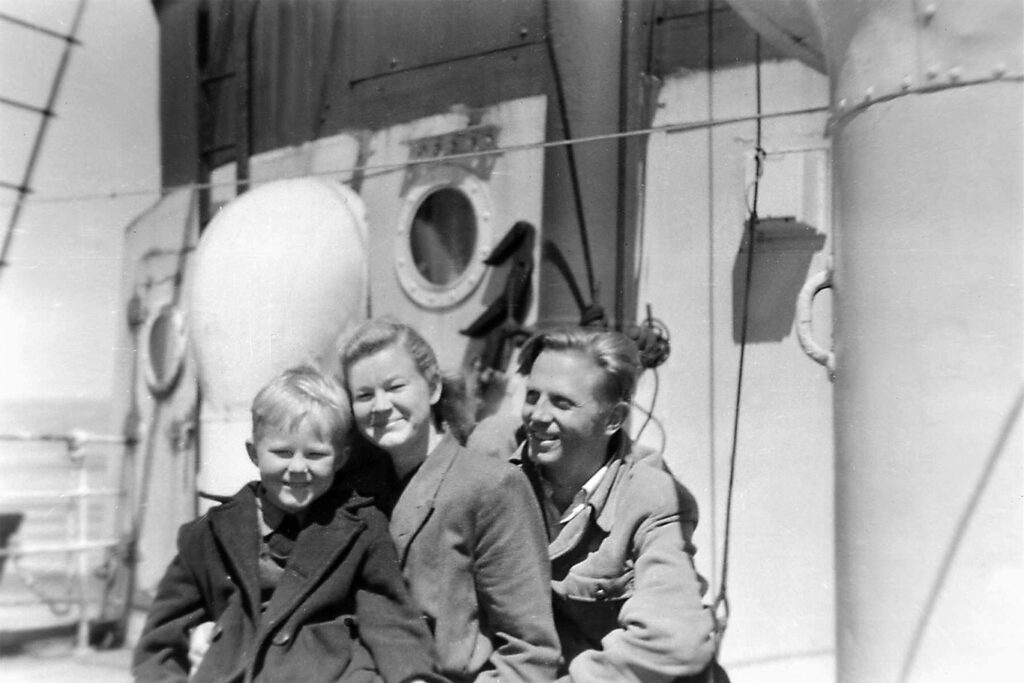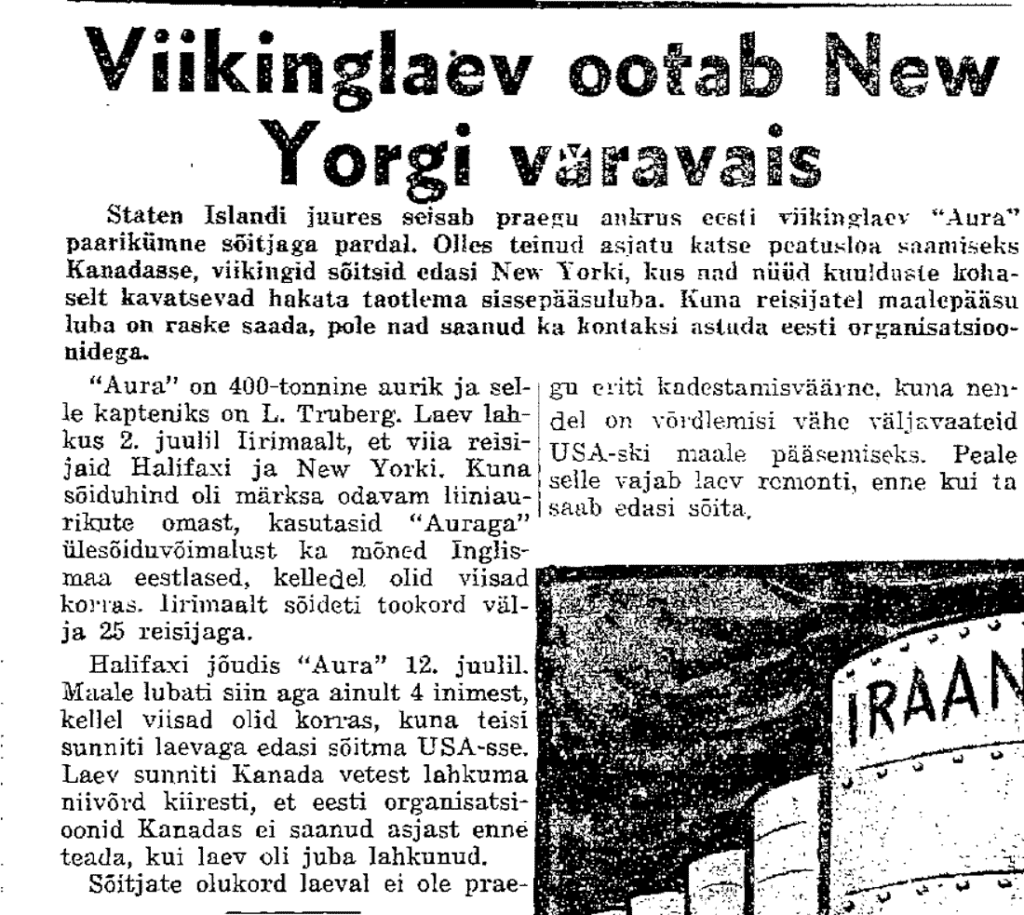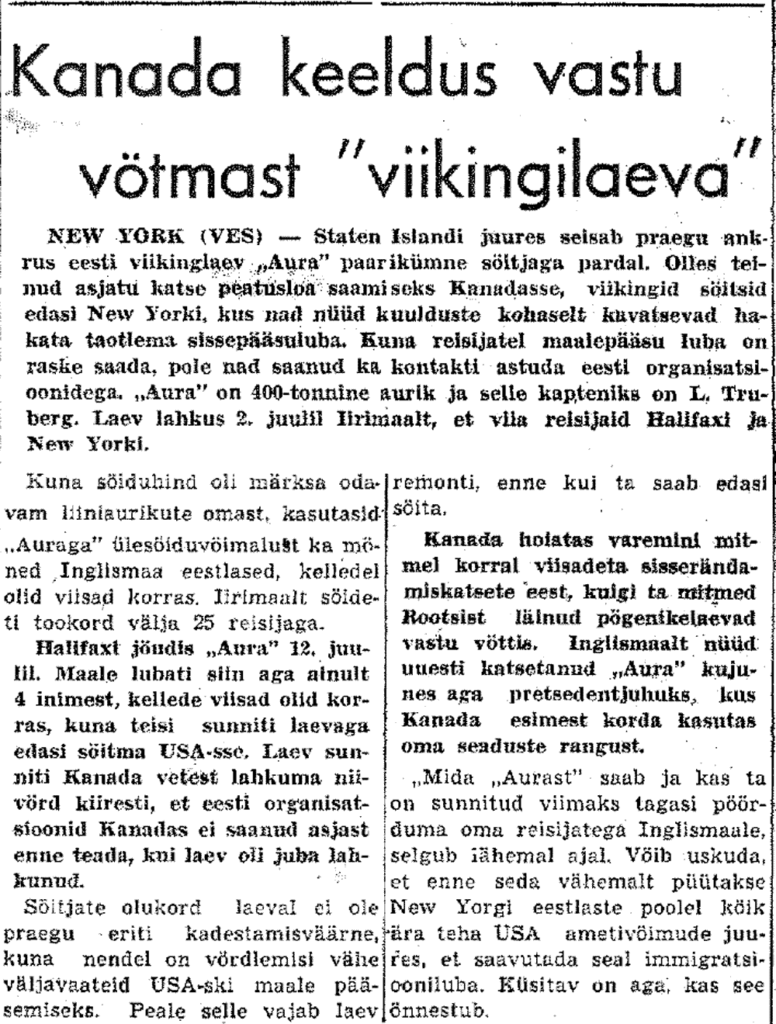Boats

Aura seglade under Honduras flagga.
Aura
Aura var ett 434 ton tungt ångfartyg. Det är dock oklart vem som var ägare – båten tillhörde antingen Truberg-brödernas rederi, eller en grupp bestående av omkring 25 stycken främst estniska flyktingar som hade jobbat udda jobb på de brittiska öarna efter krigets slut, och sparat ihop sina pengar för att köpa båten.
Båten var inte en av de mindre så kallade “Vikingbåtarna” som åkte från Sverige över Atlanten, men tidningarna använde termen eftersom hon olagligt transporterade baltiska flyktingar till Nordamerika.

Agnes, Victor och Toivo Palango ombord Aura.
1951, på vägen från England till New York, stannade Aura till i Irland. Eftersom fartyget hade saknade besättningsmedlemmar valde kapten L. Truberg att ta ombord det estniska paret Viktor och Agnes Palango, tillsammans med deras femåriga son Toivo, som maskinist och värdinna.
Paret Palango befann sig på Irland eftersom de hade flytt från Sverige 1949 ombord båten Victory, en överfull, oduglig flyktingbåt som de irländska myndigheterna hade stoppat från att fortsätta sin resa efter ankomst till Cork i september 1949. År 1950 hade majoriteten av Victorys passagerare emigrerat till Kanada, och Palango ville också lämna.

“Vikingaskepp väntar vid portarna till New York.” Den 8 september 1951 rapporterade Vaba Eesti Sõna om passagerarna ombord Auras problem med att komma in i Kanada och USA utan visum.
Aura lämnade Cobh, Irland, den 2 juli 1951 och anlände 12 dagar senare till Halifax, Kanada. I sina memoarer berättar Agnes Palango hur hon var konstant sjösjuk och att arbetet ombord båten var svårt. Hon började sitt arbete klockan fem på morgonen, med att bistå kocken i att förbereda måltider, och fortsatte sedan med att duka och diska undan tre gånger om dagen.
När Aura lade till i Halifax fick bara några få av de estniska passagerarna, som hade riktiga visum, stiga iland i Kanada. Familjen Palango var bland dem som inte tilläts att gå av båten, eftersom kaptenen, trots tidigare överenskommelse, inte hade registrerat dem som besättning och de saknade officiell status.
Enligt fru Palango, var kapten Trubergs avsedda destination New York, där han hade bott innan kriget och där han enligt uppgifter ägde en lägenhetsbyggnad. Han hade tagit ombord passagerarna för att hjälpa till att bekosta överfarten.

Stockholms-Tidningen Eestlastele rapporterade 12 september 1951 om passagerarnas problem med att komma in i Kanada och USA utan visum. Aura tvingades lämna Halifax innan estniska organisationer i Kanada lyckades hjälpa flyktingarna.
Genom den nya lagen, fick familjen Palango permanent uppehållstillstånd och livet i deras nya hemland kunde börja. Herr Palango, estnisk friidrottsmästare mellan åren 1942 och 1944, hade kvalificerat sig till Sveriges OS-lag, men tilläts inte delta eftersom han saknade svenskt medborgarskap. I USA gick han med i olika estniska sportlag och fick anställning på en möbelfabrik, där han efterhand blev direktör. Fru Palango arbetade på en bank och bidrog som bokhållare för den estniska kyrkan. Båda var långtida aktiva medlemmar i den estniska församlingen i Los Angeles under resten av sina liv.
När Palango-familjen flydde från Estland till Sverige den 21 september 1944 trodde de att flykten var tillfällig, och att de bara skulle vara borta i några månader. Nästan 50 år passerade innan Viktor Palango kunde återvända till ett självständigt Estland år 1993. Efter att ha anlänt till Tallinn, gick han ner på knä och kysste marken.
Kända besättningsmedlemmar och passagerare:
- Kapten L. Truberg
- Harold Sepp
- Viktor Palango, med fru Agnes och deras son Toivo
Fotografier använda med tillåtelse från Estniska sjöfartsmuseet.
